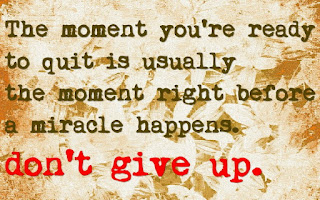This month’s study is on the book of Job. It is an
illustration of God’s sovereignty and the meaning of true faith. It addresses
the question, “why do the righteous suffer?” A question that is still debated
today. The book of Job is believed to have been written during the time of the
patriarchs (approximately 2000-1800 BC) and the first book of the Bible to be
written. It is the first poetic book of the Bible. The book of Job opens in the
land of Uz where Job is living with his family among vast wealth. Job was “the
greatest man among all the people of the East” (Job 1:3).
Satan approaches God in heaven and the discussion turns to
Job. Satan believed that Job was a righteous man because he had everything and
if it were taken from him, he would turn from God (Job 1:9-11). God gives Satan
permission to take everything Job has but he could not physically harm him (Job
1:12). Soon, Job loses his children, his herds and still does nothing wrong.
Job is given a second test in which God allows Satan to physical harm Job but
he could not take his life (Job 2:6). There Job sits with every sign of his
wealth taken and illness has claimed his body but Job still refused to turn
from God (Job 2:10). Job discusses his sufferings with his friends who all give
their view as to why he is suffering.
First, Job’s view about his suffering is “the Lord gave and
the Lord has taken away; may the name of the Lord be praised” (Job 1:21) and
“Shall we accept good from God, and not trouble?” (Job 2:10). His attitude is
that we should not give up on God simply because he allows bad experiences.
Faith in God does not guarantee prosperity and a lack of faith does not
guarantee troubles. Job was a man of faith, patience and endurance. As his
friends claim that he is suffering for something he has done, he is willing to
confess it if he knew what it was. He demands to be shown what sins he could
have committed to deserve such punishment (Job 13: 23-24). Job wanted to know
why and claimed he could bear the suffering if he could only know why (Job 23.
It is a very human demand to know why we are suffering. Does understanding the
reasons help the pain and suffering? If God were to answer why would it be
easier to accept and bear the pain? The question why is the hardest to answer because
you may get the reason but you may not like or accept such an answer.
Second, his friends, Eliphaz the Temanite, Bildad the
Shuhite, and Zophar the Naamathite, come to comfort him and offer advice. They
soon turn to accuse Job of an unresolved sin in his life. Eliphaz’s view is
simply that man is responsible for his own troubles for “those who plow evil
and those who sow trouble reap it” (Job 4:8). Bildad claims that Job’s suffering
is because he is unjust as God would not reject a blameless man (Job 8:20). When
Zophar joins the discussion he adds that only does Job have sin in his life but
his sin deserves more punishment that he already is suffering (Job 11). It is a
sentiment the friends will repeat several times. It is also a sentiment repeated
in churches today: “Oh you are dealing with financial issues because there’s
sin in your life.” Or “You are in pain because you haven’t confessed a sin.”
While God does allow the consequences of our sin and bad decisions to play out
despite our confession, it does not mean that the bad circumstances are the
result of your personal sin. Good and innocent people will suffer bad
circumstances because people don’t always do what is right and innocent parties
will suffer. Does this mean that you shall lose faith? No, because faith in the
bad times shows a stronger character than faith in the good times.
Lastly, the Lord speaks to the group. He first addresses Job
and demands to know why he speaks with knowledge (Job 38:1). The Lord rebukes
Job for daring to demand an answer, to question God and the workings of the
universe he couldn’t possibly understand. God uses His questions to Job to
demonstrate how little he really knows (Job 38-39). Job acknowledges that he
cannot understand what God understands (Job 40:4). In Job 42:2, Job says “I
know that you can do all things; no plan of yours can be thwarted.” This is a
concept that many believers must face and learn. There’s a Yiddish proverb
which states, “Man plans and God laughs.” We can carefully plan but if it is
against the will of God, it will not come to fruition. As believers, we must
submit to the will of God in our lives. As it says in the Lord’s Prayer, “thy
will be done on earth as it is in heaven” (Matthew 6:10). The Lord then addresses
the three friends because they “have not spoken of me what is right” as Job has
(Job 42:7). The Lord blesses Job’s life with far more than he had originally
because he passed the test of faith.
In conclusion, the lessons learned from Job is bad circumstances
are not always the result of sin and knowing the reason why isn’t the point.
The point is our faith in God in times of prosperity and in times of troubles,
especially in times of troubles. It may sound easier said than done and it is
something I still struggle with from time to time. There has been other times
when my faith was tested and it will continued to be tested for the rest of my
life. There are times where I worry and I think “how am I going to do this?”
And I forget to lean on my faith in Christ. However, there is always something
that reminds me to trust in Him. It would be a whisper in my dreams, a voice of
a friend, or a verse I read during my studies. Even in his anguish, Job never
turned from God. And in mine, I won't either.




















































